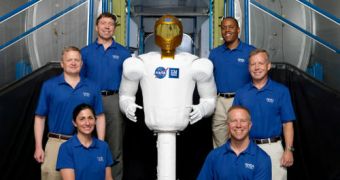After dealing with a small glitch that occurred aboard the space shuttle Discovery, NASA mission controllers say that the launch date for the STS-133 mission has finally been established.
Discovery will be able to keep its original schedule, and will therefore take-off from Launch Pad 39A at the Kennedy Space Center (KSC), in Florida.
The shuttle will fly to the International Space Station (ISS), where it will deliver cargo, supplies, and a robotic assistant, that is being delivered as a test prototype.
Launch is scheduled to take place at 4:40 pm EDT, in what is to be Discovery's 39th and final flight ever. STS-133 will also mark the 45th ISS-bound shuttle mission, and the 4th launch of an American orbiter for 2010.
NASA managers decided on the final launch date yesterday, October 25, after they analyzed they conclusions of the flight readiness review. The decision was made by senior NASA officials and managers for the primary contractors associated with the Space Shuttle Program.
Six astronauts will fly on this particular mission, which will spend about 11 days attached to the ISS. The flight will be commanded by NASA astronaut Steve Lindsey, SpaceRef reports.
Eric Boe will be Discovery's final pilot, while astronauts Alvin Drew, Tim Kopra, Michael Barratt and Nicole Stott will be mission specialists.
All of the flyers are veterans of the American space program, and all of them have been to the ISS before, either as commanders, or ISS flight engineers.
Their job now is to deliver a Permanent Multipurpose Module (PMM) to the station, and then affix it in its proper place during an extra-vehicular activity (EVA).
Two spacewalks are prepared for the STS-133, during which time they will handle maintenance work outside of the ISS.
Additionally, the Express Logistics Carrier 4 will also need to be installed. This large platform is used outside of the station to hold large cargo for long-term storage.
The STS-133 crew will also deliver Robonaut-2 to the ISS. This is the first human-like robot to make its way to low-Earth orbit. It was developed by experts at NASA and General Motors.
The machine is very strong, and yet capable to handling various tools like a human. It was designed to assist astronauts in cumbersome tasks inside and outside the ISS.

 14 DAY TRIAL //
14 DAY TRIAL //